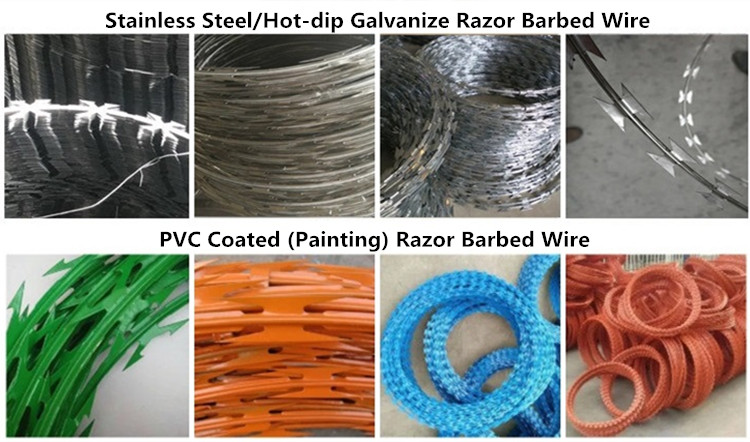Nov . 08, 2024 12:41 Back to list
Innovative I-Bar Grating Solutions for Enhanced Strength and Durability in Various Applications
Understanding I-Bar Grating Products A Comprehensive Overview
I-bar grating products play a vital role in various industrial applications, known for their durability, strength, and versatility. Made from a combination of high-quality materials, these grates are designed to withstand heavy loads and harsh environments. This article explores the characteristics, benefits, applications, and installation of I-bar grating products, shedding light on why they are a popular choice across different sectors.
What is I-Bar Grating?
I-bar grating is a type of metal grating that features I-shaped bars, which provide exceptional strength and support. The design typically consists of two primary components the load-bearing bars, which run parallel to each other, and the cross bars that connect them. This arrangement not only enhances the overall stability of the grating but also allows for significant weight distribution, making it ideal for walkways, platforms, and various structural uses.
Key Characteristics
1. Strength and Durability I-bar gratings are manufactured from materials such as steel, aluminum, or fiberglass, making them resilient against wear, corrosion, and impact stress. This durability ensures a longer lifespan, reducing the need for frequent replacements.
2. Lightweight Despite their strength, I-bar grating products are relatively lightweight compared to solid metal plates. This characteristic simplifies handling, transportation, and installation processes, especially in large-scale projects.
3. Open Design The open design of I-bar grating allows for excellent drainage and ventilation. This feature is particularly beneficial in environments where liquids or debris might accumulate, helping to maintain safety and cleanliness.
4. Customizable These grating products can be customized in terms of size, spacing, and coating, catering to specific project requirements and environmental conditions. This adaptability enhances their usability across a range of industries.
Benefits of I-Bar Grating
1. Safety I-bar grating provides a secure walking or working surface that minimizes slip and fall hazards. The design can be enhanced with non-slip coatings, ensuring safety in wet or oily conditions.
i bar grating products

2. Cost-Effective The longevity and low maintenance requirements of I-bar grating products make them a cost-effective solution for businesses. Initial investment costs are often offset by minimal upkeep and extended durability.
3. Eco-Friendly Many I-bar grating products are made from recyclable materials, contributing to sustainability efforts. Choosing such products can help organizations reduce their environmental impact.
4. Ease of Installation I-bar gratings can be installed quickly and efficiently, making them ideal for projects with tight deadlines. Their lightweight nature allows for easier handling without compromising structural integrity.
Applications
I-bar grating products are widely used in numerous industries, including
- Construction Ideal for walkways, platforms, and safety barriers. - Manufacturing Used in assembly lines and equipment access areas. - Transportation Commonly applied in bridges, railroads, and pedestrian crossings. - Wastewater Treatment Effective for platforms and walkways in treatment facilities.
Installation Considerations
When installing I-bar grating, it is essential to consider the load requirements, environmental factors, and proper support structures. Adequate spacing between bars should also be maintained to ensure safety and functionality. Consulting with a professional engineer can help ensure that the installation meets industry standards and regulatory requirements.
Conclusion
I-bar grating products offer a unique combination of strength, versatility, and safety, making them indispensable in various industrial environments. Their ability to adapt to specific needs and withstand harsh conditions ensures that they remain a preferred choice for engineers and contractors alike. As industries continue to evolve, the demand for durable and cost-effective solutions like I-bar grating will persist, making it a fundamental element in modern construction and manufacturing practices.
-
Temporary Fencing Solutions-Hop Dipped Galvanized / PVC Coated Fences|Anping County Xingzhi Metal Wiremesh Products Co.,Ltd
NewsAug.07,2025
-
Hot-dip Galvanized Flat Wrap Razor Wire: High-Security & Durable
NewsAug.07,2025
-
Temporary Fencing Solutions-Anping County Xingzhi Metal Wiremesh Products Co., Ltd.|Welded Wire Mesh&Chain Link Mesh
NewsAug.06,2025
-
Hop Dipped Galvanized / PVC Coated Temporary Fence - Anping County Xingzhi Metal Wiremesh Products Co., Ltd | Durable, Corrosion-Resistant, Easy Installation
NewsAug.06,2025
-
Hop Dipped Galvanized / PVC Coated Temporary Fence - Anping County Xingzhi Metal Wiremesh Products Co., Ltd
NewsAug.06,2025
-
Hop Dipped Galvanized PVC Temporary Fence-Anping Xingzhi|Modular Corrosion
NewsAug.06,2025



